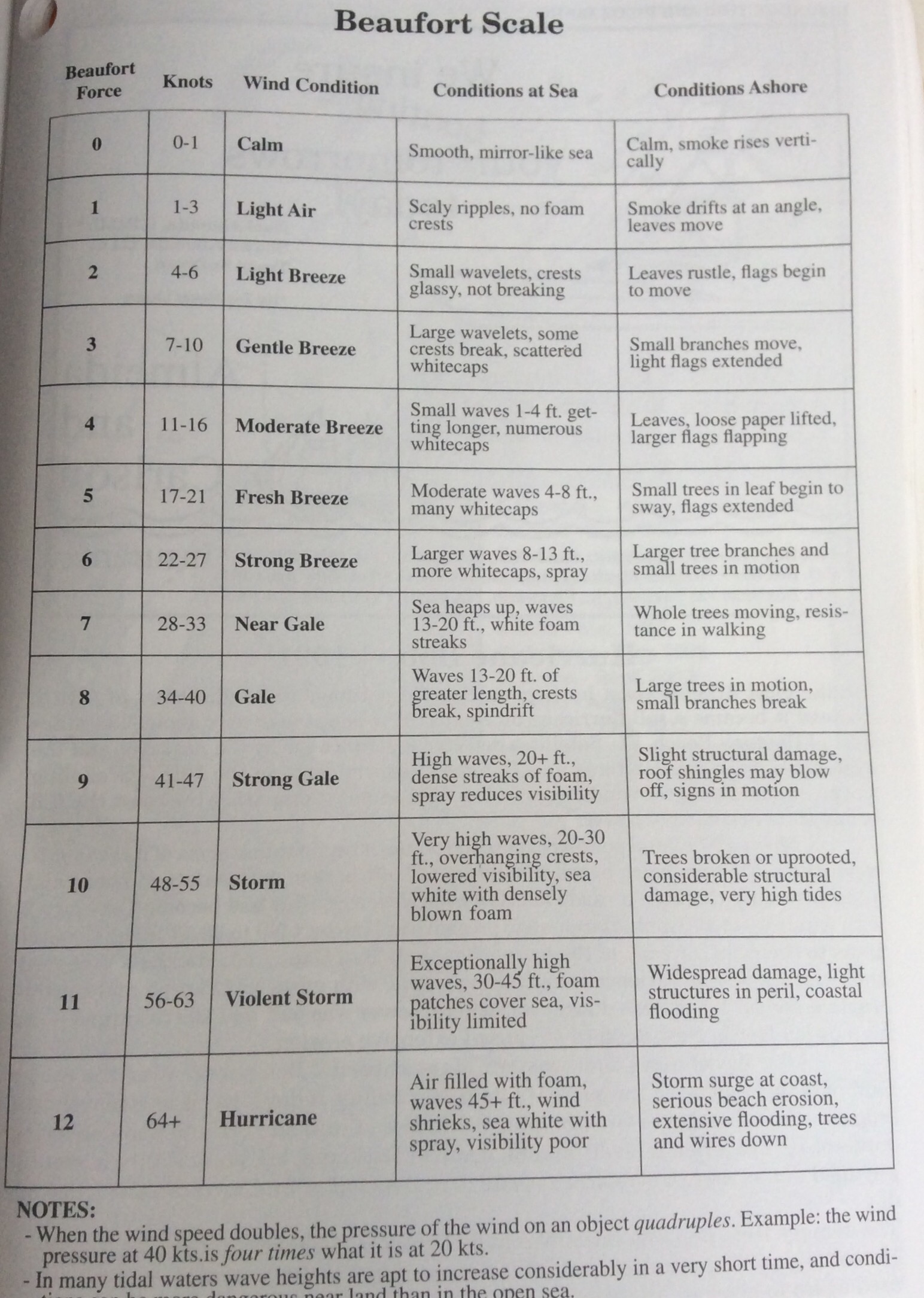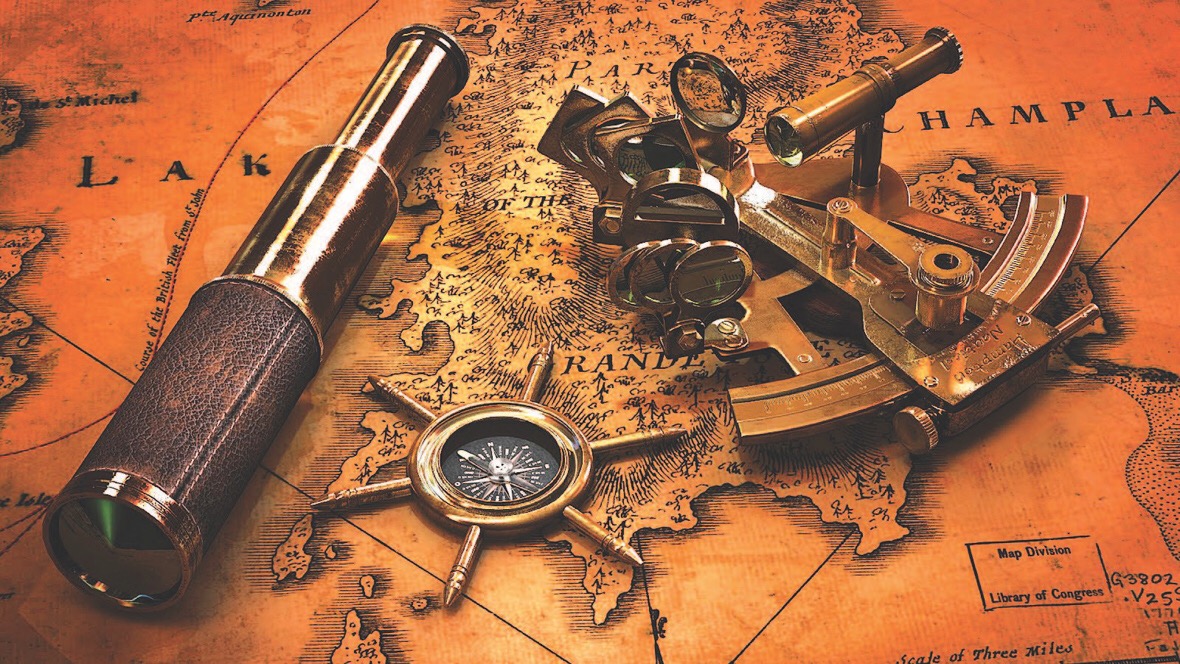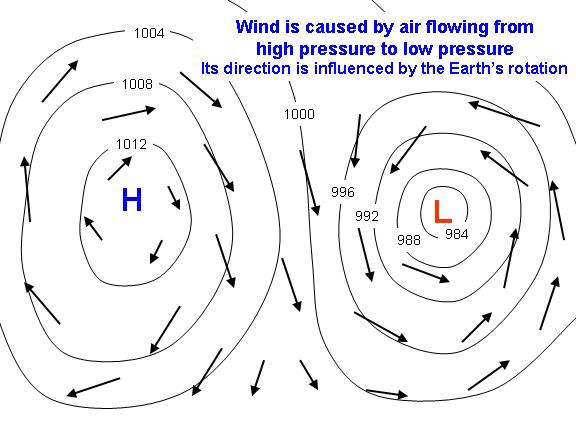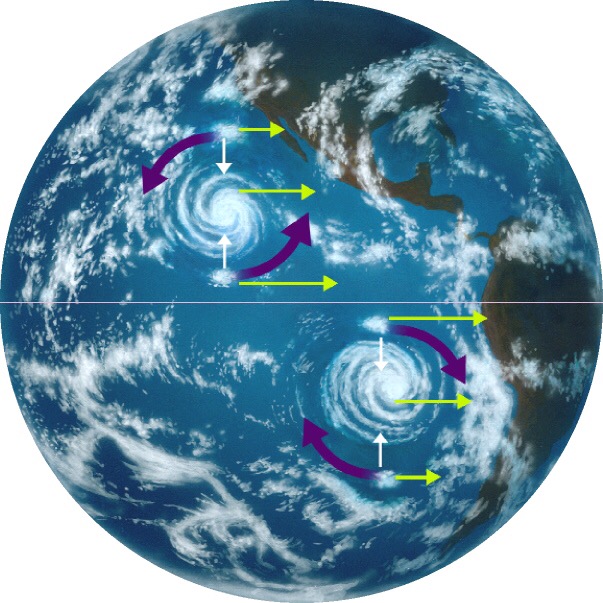Continued from – “Longitude 39 Boom Repair”
The forecast as of July 27 (the day the boom broke), read: a “complex low” forming in the Chesapeake bay region, predicted to come cruising across the North Atlantic, intercepting our coordinates in about five days time.
“A complex low? What the hell does that mean,” we all asked. “Like confused? Like can’t quite figure itself out?”
“Like your asymmetrical haircut?” jabbed Peter.
“Hey!” I said, “It’s multif-functional.”
As Dad worked and whittled to get the boom in one piece, we watched the earily circular system wind it’s way towards us, like a pinwheel at a carnival. The satellite image showed a blob of red 30 knot winds in the lower right quadrant, the leading edge. “It looks like a freaking tropical storm!” I said.
“Yeah, they make them big in DC,” said Dad, “almost as big as Texas.”
***********
I’ll take this moment to acknowledge the recent storm Harvey which flooded Texas, and in general the increasingly unpredictable weather patterns around the world, making it harder to guarantee “safe” sailing windows. While the Atlantic hurricane season spans from June 1st to November 30, on June 10th of this year, a fierce northern storm caught a trans-Atlantic sailboat race in 60 knot winds and 45 foot waves, leading to multiple rescues. (On the Beaufort weather scale, that’s nearly a hurricane.)

“It seems like the window between northern storms and hurricanes season is closing,” said Dad. Although the Atlantic hurricane season technically peaks late August through September, Dad did not want to waste any time crossing that ocean, seeing as we were creeping our way towards the end of July, and he had once seen what mid-August could bring…
August 1986: Quite typically for a voyage, Tiger was leaving late for her trek from the Caribbean to New York, where they would spend a year finishing her repairs. One of the main jobs? Keelbolts, the things that hold the keel on. Oh, the keel? That’s the heavy thing on the bottom that keeps the boat upright and tracking through the water. Seven thousand pounds of lead encased in steel attached to the hull with bolts which may or may not have been about to let go.
My brother and I didn’t make that trip. While still on St. John, my mother dreamed that we were caught in a hurricane at sea. Already anxious about the trip (maybe aggravated by Dad’s talk of the keel falling off), they decided we would fly up instead. Dad found three crew, our dear belated friend Keith (a capable sailor), and a married couple, of whom the wife proved a trooper.
Leaving Bermuda, the four-day weather forecast was clear, although Keith’s wife told him of a nasty tropical wave that had just sept St. John.. They set off for the 774 mile passage north. Fine sailing and weather checks using intermittent radio broadcasts. Around day 5, a prop plane circled the boat. Dad went below to retrieve his radio, so he could hold it up for the pilot to see the dangling wires. The thing had never worked, one of the jobs on the list. The plane buzzed off.
“I wonder what he wanted,” said Dad.
Then, through the garble and chop of the weather station, came a singsong news voice, “Wheeeeeeere’s Charlie?”
Dad raised his eyebrows. “What the fuck is Charlie?”
According to Wikipedia, Charlie was born out of a low pressure system first observed on August 11, my first birthday. It was one of those Gulf of Mexico/Florida-born storms that tend to shoot out across the North Atlantic. By August 15, it was a hurricane flirting with the coast of North Carolina. By August 16, it had abandoned it’s land affair to seek out a solitary wooden boat it had heard about somewhere on the ocean. Back on Long Island, before the days of storm tracking and predictions, all Mom could do was wait and worry. Every night, leaving us safely sleeping at her friends’ house, she would drive out to Jones Beach to sit and watch for Tiger and her precious crew.

The stormy stalker finally found Tiger somewhere off the coast of New Jersey, hitting with mild hurricane force just as night fell. Dad steered the worst of it, riding waves with bare poles for six hours, calling for a break. “You’re doing fine!” his crew replied from down in the cabin. “No, I’m not!” he’d wail back through the screaming air. Dad could not accurately measure the waves that night, except that down in the troughs, the howling wind seemed to stop, and all went quiet. Finally, at 2:00 am, Keith stepped up to steer, mercifully relieving the haggard captain as the storm turned it’s fickle attention to the rest of the Atlantic.
The keel stayed on. Tiger made it to New York. And the storm moved on, still a gale across much of the North Atlantic. Hitting Ireland and setting a daily rainfall record, flooding 450 buildings in Dublin, some up to eight feet deep. A mid-August storm, all the way to Ireland.
So yeah, when there’s low wind and Dad wants to crank the engine to get across this ocean quicker, you can’t argue.
******************
An understanding of weather naturally befalls a sailor, among other useful skills, like conserving water, staying upright on a moving surface, quick reactions to grab things that are falling, anticipating reciprocal rolls of swells, pouring liquids (sailors would do well in the movie “Cocktail”, if they don’t drink all the rum).
Polynesian culture fascinates me because of its connection to the ocean, and especially its navigation by reading stars and changes in water and weather. Even as navigating has shifted from human senses to tools (such as sextants and chronometers and reduction tables, and now GPS and chart plotters), understanding clouds and pressure drops and swell and current persists as essential sailing knowledge.

We are in an age where you can buy an internet router for the boat, and download fairly accurate predictions, showing what the wind is likely to be at which hour of which day. We had all this on our trip, but my father was skeptical, and I am glad. I am lucky to be learning about weather before all wisdom is lost to blind trust in prediction services. Besides, in an apocalyptic “Waterworld” scenario, which company will you pay with land-dirt to deliver weather predictions as a message-in-a-bottle? Of course, with the globe completely covered in ocean, the art of reading weather will have to evolve anew anyways…but I digress. (If you haven’t seen “Waterworld”, I recommend it. While you’re at it, check out “Captain Ron” for a richer understanding of boat life.)
My interest in weather seemed to have coincided exactly with when my father got his first (and current) iPad, about five years ago. One of the first websites he learned how to use was NOAA ocean prediction center. I would sit and watch him study the map of the globe’s pressure systems how they were predicted to move. From this, he’d make his own predictions of whether it would be sunny and cold, or warm and rainy, and which direction the wind would be coming from.
In the school of practical meteorology, I am a freshman, or maybe still applying for enrollment, but here are the basics as I understand them. Weather is movement of air due to pressure changes. Pressure changes are due to temperature changes. Hot air is less dense (low pressure), cold air is more dense. Hot air rises and expands, leaving behind a vacuum into which wind is sucked. Cold air presses down, squeezing air out of it like a crowded party.

Then there’s this whole other thing happening, a little consideration that the earth is spinning. So as air moves into a low or out of a high, it is bent (like trying to run a straight line across a spinning floor). This is the Coriolis effect, and it’s why systems rotate. In the norther hemisphere, low pressure systems, from benign to hurricanes, rotate counter clockwise (and clockwise for high pressure systems). That means the bottom edge brings west winds, becoming southwest, south, southeast, east, northeast, north, and northwest as you go around the edge. If you pass right through the middle of a low pressure, and it’s travelling to the east, you’ll most likely first see south and southwest winds changing to north and northeast on the backside. Because the motion of the storm will add to the wind speed, the leading edge will be more intense.

In our case, the southeast corner of this “complex low” looked the stinkiest. Predictions were ranging from “near gale” status with 28-33 knot winds, to “strong gale” (force 9 on the Beaufort scale) with winds in the 40’s.
I didn’t quite realize during those calm days of boom fixing and pleasant wing on wing sailing and clothes hanging to dry and brownie baking, that each course adjustment Dad called for was based on the weather texts, which told him where the center of the system was headed. We were slowly gaining a couple degrees latitude to stay near the center and away from that stinky corner. He was nudging us up north to escape the brunt of it.
Continued in – “Foul Weather Finally”

Love it Michelle! Thanks for adding me in a bit too 🙂 That was fun….but again, leaving us handing on the edge of the story……hope you have enjoyed today as much as yesterday, and may that trend continue on, and on, and on…
Had a nice evening with Deb last night…we drove up to King Estate (so she could finally enjoy a winery, as we missed succeeding at that during most of her trip). We sat out on the porch, overlooking the hills to the east and enjoyed a lovely sunset, while sipping wine and eating appetizers. We indulged in a delicious dinner, and amazingly, still had things to talk about after almost 7 weeks of constant contact. It was great to have her here, and even though I’ll miss her, it will be great to get back to my usual life.
Well, you’re probably heading to or already in bed now, so I’ll say sweet dreams and good morning!!
love and hugs, Mama PS…I just signed up today to attend an event locally with one of the 13 grandmothers, Grandmother Mona, on October 7th and then on October 8th I will attend a sweat lodge with her…so excited for that!
LikeLike
Thanks for reading, again…just know that your comments can be seen publicly;)
LikeLike
Another great installment, thanks.
LikeLike